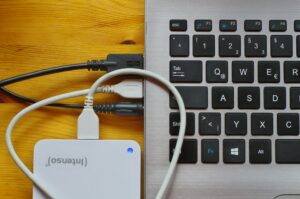How to Perform Data Preprocessing and Cleaning in MATLAB
Performing data preprocessing and cleaning is a crucial step in the data analysis pipeline, ensuring that datasets are accurate, consistent, and suitable for analysis or modeling tasks. MATLAB, a powerful computational environment widely used in engineering, science, and beyond, offers a rich set of tools and functions for data preprocessing and cleaning. In this comprehensive article, we will explore various techniques, methods, and best practices for performing data preprocessing and cleaning in MATLAB.
Table of Contents
- Introduction to Data Preprocessing and Cleaning
- Loading and Inspecting Data
- Handling Missing Data
- Handling Duplicate Data
- Handling Outliers
- Data Normalization and Standardization
- Feature Scaling and Transformation
- Data Imputation Techniques
- Handling Categorical Data
- Data Encoding and One-Hot Encoding
- Feature Selection and Dimensionality Reduction
- Data Integration and Fusion
- Data Discretization
- Text Preprocessing
- Time Series Data Preprocessing
- Image Data Preprocessing
- Audio Data Preprocessing
- Advanced Techniques and Tools
- Best Practices and Tips
1. Introduction to Data Preprocessing and Cleaning
Data preprocessing and cleaning involve transforming raw data into a usable format, addressing issues such as missing values, duplicates, outliers, and inconsistent data formats. Proper preprocessing ensures that the data is suitable for analysis, modeling, and machine learning tasks, leading to more accurate and reliable results.
2. Loading and Inspecting Data
The first step in data preprocessing is loading the dataset into MATLAB and inspecting its structure, contents, and quality.
matlab
Copy code
% Load a dataset data = readtable('data.csv'); % Display the first few rows of the dataset disp(head(data)); % Summary statistics summary(data); % Visualize data distribution histogram(data.Var1);
3. Handling Missing Data
Missing data can significantly affect the quality of analysis and modeling results. MATLAB provides various methods for handling missing data, including removal, imputation, and interpolation.
matlab
Copy code
% Remove rows with missing values data_cleaned = rmmissing(data); % Impute missing values data_imputed = fillmissing(data, 'linear'); % Interpolate missing values data_interpolated = interp1(data.Time, data.Value, 'spline');
4. Handling Duplicate Data
Duplicate data entries can skew analysis results and should be identified and removed.
matlab
Copy code
% Remove duplicate rows data_unique = unique(data, 'rows');
5. Handling Outliers
Outliers can significantly impact statistical analyses and machine learning models. Various methods, such as Z-score, Tukey’s method, or clustering, can be used to detect and handle outliers.
matlab
Copy code
% Detect outliers using Z-score z = zscore(data); outliers = abs(z) > 3; % Remove outliers data_cleaned = data(~outliers, :);
6. Data Normalization and Standardization
Data normalization and standardization are essential for ensuring that features are on a similar scale, improving the convergence and performance of machine learning algorithms.
matlab
Copy code
% Normalize data data_normalized = normalize(data); % Standardize data data_standardized = zscore(data);
7. Feature Scaling and Transformation
Feature scaling and transformation techniques, such as Min-Max scaling or logarithmic transformation, can help improve the performance of machine learning models.
matlab
Copy code
% Min-Max scaling data_scaled = (data - min(data)) / (max(data) - min(data)); % Logarithmic transformation data_transformed = log(data);
8. Data Imputation Techniques
Data imputation techniques, such as mean, median, or mode imputation, can be used to fill in missing values.
matlab
Copy code
% Impute missing values with the mean data_imputed = fillmissing(data, 'constant', 'mean');
9. Handling Categorical Data
Categorical data should be properly encoded or transformed into numerical representations for analysis and modeling.
matlab
Copy code
% Convert categorical data to numerical labels data_labels = categorical(data_categorical);
10. Data Encoding and One-Hot Encoding
For machine learning tasks, categorical variables are often encoded using one-hot encoding to create binary features for each category.
matlab
Copy code
% One-hot encoding data_encoded = onehotencode(data_categorical);
11. Feature Selection and Dimensionality Reduction
Feature selection and dimensionality reduction techniques, such as principal component analysis (PCA) or feature importance, can help reduce the complexity of the dataset and improve model performance.
matlab
Copy code
% Perform PCA [coeff, score, latent, ~, explained] = pca(data); % Select top features based on importance important_features = featureImportance(data, labels);
12. Data Integration and Fusion
Data integration and fusion involve combining multiple datasets or sources to create a unified dataset for analysis.
matlab
Copy code
% Merge datasets merged_data = join(data1, data2);
13. Data Discretization
Data discretization involves dividing continuous variables into discrete intervals, which can simplify analysis and modeling tasks.
matlab
Copy code
% Discretize data data_discretized = discretize(data, bins);
14. Text Preprocessing
For text data, preprocessing steps such as tokenization, stemming, and stop-word removal can be performed to clean and prepare the text for analysis.
matlab
Copy code
% Tokenize text tokens = tokenizeText(text); % Perform stemming stemmed_text = normalizeWords(text);
15. Time Series Data Preprocessing
Time series data often requires special preprocessing steps such as resampling, interpolation, or detrending.
matlab
Copy code
% Resample time series data data_resampled = resample(data, newTime); % Detrend time series data data_detrended = detrend(data);
16. Image Data Preprocessing
Image data preprocessing involves tasks such as resizing, cropping, or normalization to prepare images for analysis.
matlab
Copy code
% Resize images resized_image = imresize(image, [newHeight, newWidth]); % Normalize pixel values normalized_image = double(image) / 255;
17. Audio Data Preprocessing
For audio data, preprocessing steps such as sampling rate conversion, filtering, or feature extraction can be performed.
matlab
Copy code
% Resample audio data audio_resampled = resample(audio, newSamplingRate); % Apply a low-pass filter filtered_audio = lowpass(audio, cutoffFrequency);
18. Advanced Techniques and Tools
Advanced techniques and tools, such as deep learning models or specialized toolboxes, can be used for complex data preprocessing tasks.
matlab
Copy code
% Train a deep learning model for feature extraction [features, labels] = extractFeatures(data, labels);
19. Best Practices and Tips
- Understand Data Characteristics: Gain a deep understanding of the dataset’s structure, features, and domain-specific knowledge before preprocessing.
- Iterative Approach: Data preprocessing is often an iterative process, requiring multiple rounds of cleaning, exploration, and validation.
- Documentation: Document all preprocessing steps and transformations to ensure reproducibility and transparency.




